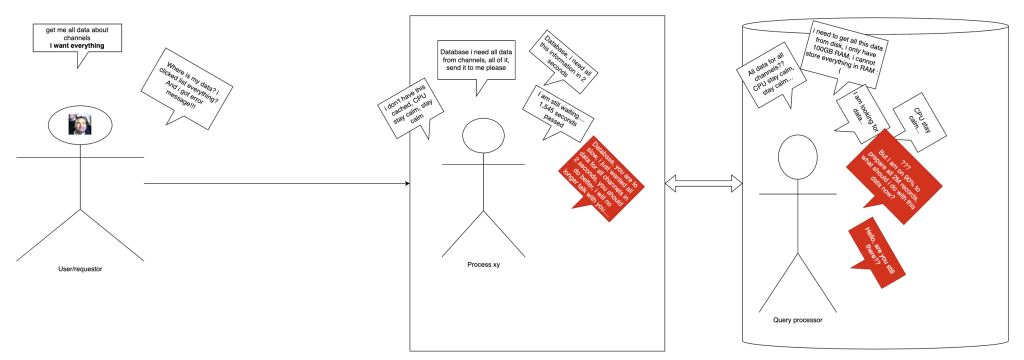
Timeouts (Wait Times) occur when an application or database is unable to send or receive data in a timely fashion.
Let’s find out why that happens and how we can prevent it.
The definition of Wait Times is…
App Timeout is the time it takes for an application to get information from a database after requesting it.
They can occur when the application or database is overwhelmed, or when the requests take too long to process.
But, in a lot of cases, it can also be due to a lengthy query or complex business logic that requires more time to process before a response can be given. So, to simplify it, Timeouts occur when we request an unrealistic amount of data in an unrealistic amount of time.
Short timeouts can also lead to unrealistic expectations from an application or database. Therefore, achieving short timeouts, especially with complex business logic, can be challenging.tim
Story:

How can developers avoid them?
To avoid timeouts between applications and databases, it is essential to ensure that the application and database have adequate resources to handle requests quickly.
It is also important to optimize queries and make sure that complex business logic does not become a bottleneck. A lot of companies struggle with this if a lot of their services were written a while ago. Due to the constant development of new features and the increase in clients and traffic, we would mainly increase the complexity of these old services, which lead us closer and closer to bottleneck.
Additionally, using caching technologies such as Redis or Memcached can be beneficial for faster data retrieval.
Finally, setting more realistic timeout limits based on the complexity of the queries and the resources available will help to prevent application ↔ database timeouts.
Let’s dive into database optimization
To achieve the best performance when queuing data from a database, ensure that you optimize the database structure and write queries efficiently.
Efficient query writing occurs when optimizing code for the best performance using the least resources. This includes ensuring that the queries are not redundant, using the most efficient techniques available, and avoiding unnecessary operations.
Additionally, ensure that you use indexes to retrieve data quickly and efficiently.
• SQL JOIN should be used when data needs to be retrieved from multiple tables in a database.
• CTEs (Common Table Expressions) are an efficient way to create and work with subsets of data in a query.
• Temp tables are useful when a query needs to be broken into multiple parts in order to optimize performance or to make a complex query more manageable.
• Stored procedures can improve performance compared to ad-hoc queries because they are pre-compiled and cached. Additionally, they are useful for encapsulating complex business logic and eliminating SQL code duplication. They can be beneficial in certain circumstances, especially when dealing with complex queries and/or large datasets. However, you should only use them if writing the code in a stored procedure is more efficient than executing multiple individual queries.
